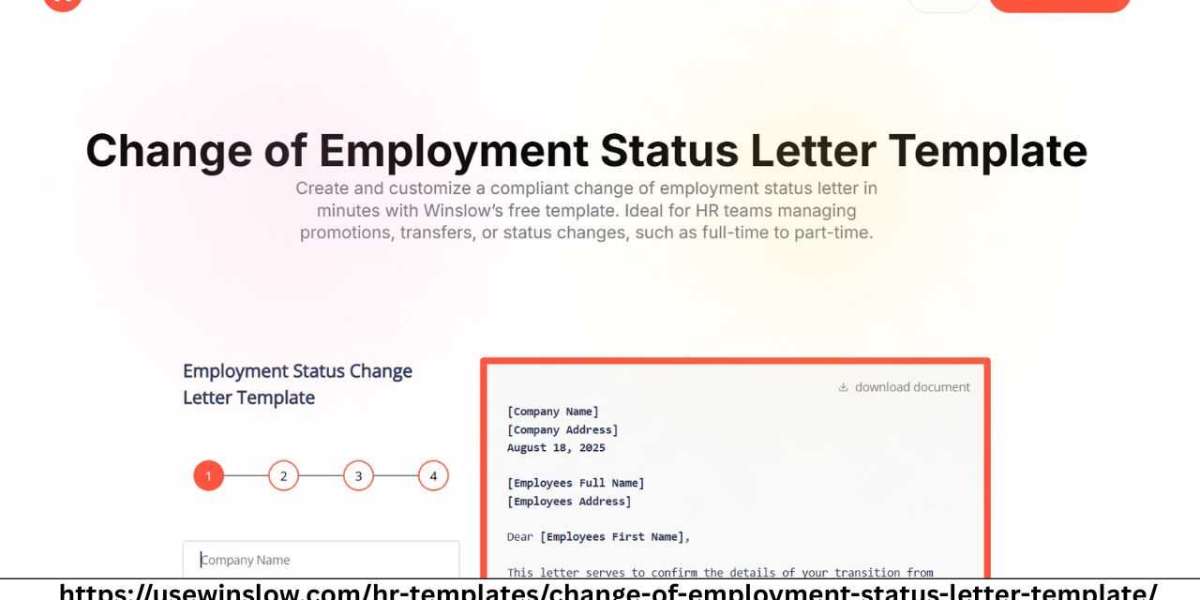Human resource management relies heavily on clear and structured communication. One essential tool in this process is a change of employment status letter template. This document plays an important role in ensuring that employees understand adjustments to their work situation, whether those changes involve a promotion, demotion, transfer, revised work hours, salary updates, or shifts from temporary to permanent positions. For HR teams, small businesses, and larger companies alike, these letters create a formal record and establish trust between employers and employees.
When an employee’s role changes, it is more than just a simple update—it often affects their career path, income, responsibilities, and future within the organization. Because of this, every company needs to approach the communication carefully and professionally. Using change of employment status letter templates allows HR teams and managers to deliver consistent messages without leaving out important details. A thoughtfully prepared letter reduces the risk of misunderstandings and helps employees clearly see how the change will impact them.
A change of employment status letter provides more than information—it sets the tone for how an employee perceives the organization. For example, if an employee is promoted, receiving a detailed and respectful letter makes them feel valued and recognized. On the other hand, if hours are reduced or responsibilities are shifted, the letter should still convey empathy while outlining the facts. HR professionals know that employees appreciate transparency, and providing updates in writing shows that the company respects their right to clear communication.
The structure of such a letter usually includes a few key elements. First, it should identify the employee by name and current role. Second, it must state the nature of the change, such as a new position, pay adjustment, or modified work schedule. Third, the letter should specify the effective date of the change, which helps avoid any confusion later. Fourth, employers may include additional details such as new responsibilities, reporting structures, or updated benefits. Finally, it is often recommended to add a closing section that encourages employees to reach out with any questions. By following this structure, organizations can ensure that their communication remains clear and complete.
Creating these letters individually for every situation can take a lot of time, especially for HR teams handling large groups of employees. This is why using templates is highly effective. A ready-to-use change of employment status letter template provides the basic structure, while HR teams only need to customize the specific details for each case. This not only saves time but also maintains consistency across the entire organization. Employees who receive these letters from different managers will notice the professionalism and uniformity, which reflects positively on the company as a whole.
Consistency is one of the biggest advantages of templates. Without them, managers might unintentionally miss out on important details or write letters in very different tones, leading to confusion or even dissatisfaction. For HR teams that operate within Gmail, Outlook, Slack, Teams, or other communication systems, having a collection of templates ready ensures quick, accurate, and professional responses. Winslow understands the challenges HR departments face in managing employee communications, which is why tools that support ready-made and customizable templates can be such a valuable asset.
Beyond communication, these letters also serve an important purpose for documentation. Businesses need accurate records of employee changes for payroll, compliance, and legal requirements. If an employee ever disputes their employment terms, the written letter can provide clear evidence of the change and when it occurred. This record-keeping protects both the company and the employee, reducing the likelihood of conflicts or misunderstandings.
It is also important to remember that not all changes are positive from an employee’s perspective. While some letters may announce promotions or salary increases, others may communicate reductions in hours, transfers to less favorable shifts, or even temporary suspension. In such cases, tone matters a great deal. Even though the letter must remain professional and factual, it should also show empathy. For example, phrases that acknowledge the employee’s contributions or emphasize the company’s support during the change can help soften the message.
Templates make this balance easier to achieve. By designing different versions for different scenarios—promotions, role adjustments, leave updates, or reduced hours—HR teams can ensure that each type of communication maintains professionalism and sensitivity. Customization within a consistent framework allows the letter to reflect both the company’s standards and the unique needs of each situation.
Employers can also use these letters to provide guidance on next steps. For example, if an employee is promoted, the letter might include information about upcoming training, performance expectations, or new reporting relationships. If hours are reduced, the letter might outline how benefits will be adjusted and who the employee can contact for further clarification. By including such details, companies avoid unnecessary confusion and support employees during the transition.
For small businesses, having templates in place can make HR tasks much smoother. These organizations often operate with smaller HR teams or even without a dedicated HR professional, which means efficiency is critical. Templates simplify communication and allow managers to focus on other important responsibilities. Larger organizations, meanwhile, benefit from templates by ensuring that messages remain standardized across multiple departments and managers.
Employees themselves also value receiving formal letters for important changes. A verbal announcement alone can be easily forgotten or misunderstood, but a written document provides clarity. It allows employees to refer back to the letter whenever needed, whether for personal planning, financial arrangements, or career decisions. In addition, employees may need to present these letters as proof of employment changes when applying for loans, housing, or other personal matters.
The professional image of the company also benefits from clear communication. Employees who feel well-informed are more likely to trust the organization and remain engaged in their work. Transparent communication reduces anxiety and shows that the company is organized, reliable, and respectful of its workforce. This trust contributes to stronger employee retention and a more positive workplace culture.
To sum up, a change of employment status letter template is an important tool for organizations to maintain clarity, professionalism, and consistency in communication. By using templates, companies can save time, reduce errors, and build stronger relationships with employees. Documentation created through these letters also supports compliance and record-keeping, protecting both the employer and the workforce. Winslow offers solutions that support HR teams and companies in streamlining these processes, ensuring that communication remains effective and professional across platforms like Slack, Teams, Gmail, and Outlook.
In conclusion, every business can benefit from creating a reliable change of employment status letter. This approach not only informs employees about changes but also builds trust, ensures transparency, and provides lasting documentation. With the help of structured templates, HR teams and managers can communicate updates in a way that is respectful, clear, and aligned with company values. A carefully prepared change of employment status letter template is more than just a document—it is a vital part of professional communication that strengthens workplace culture and supports long-term success.



